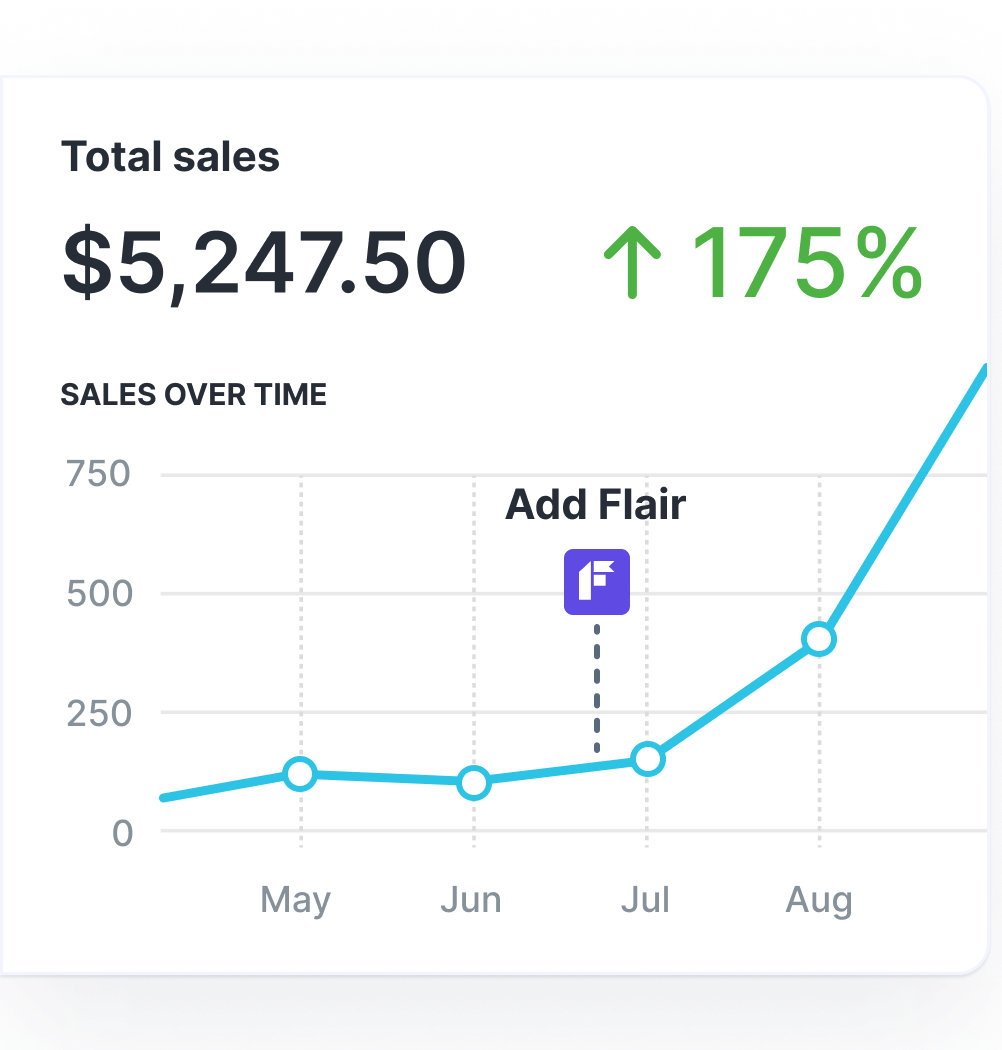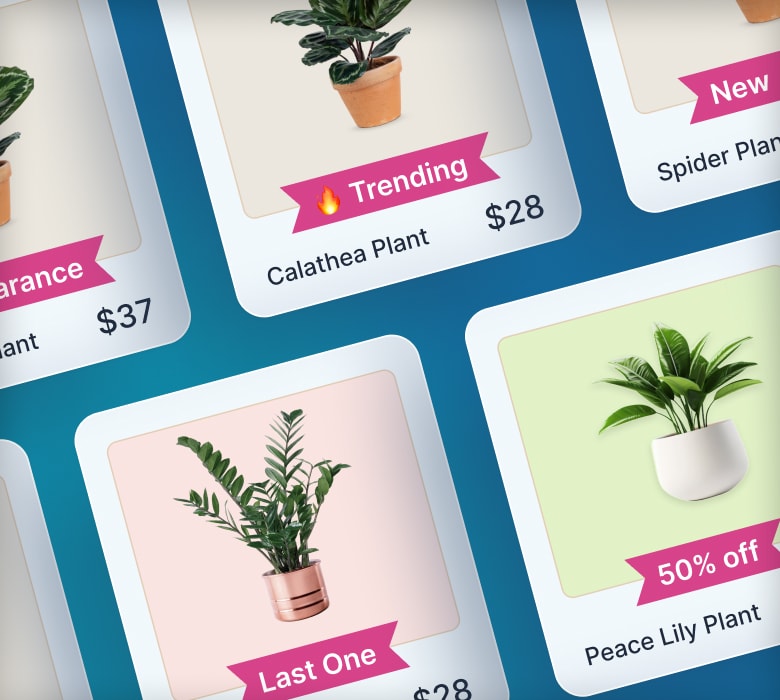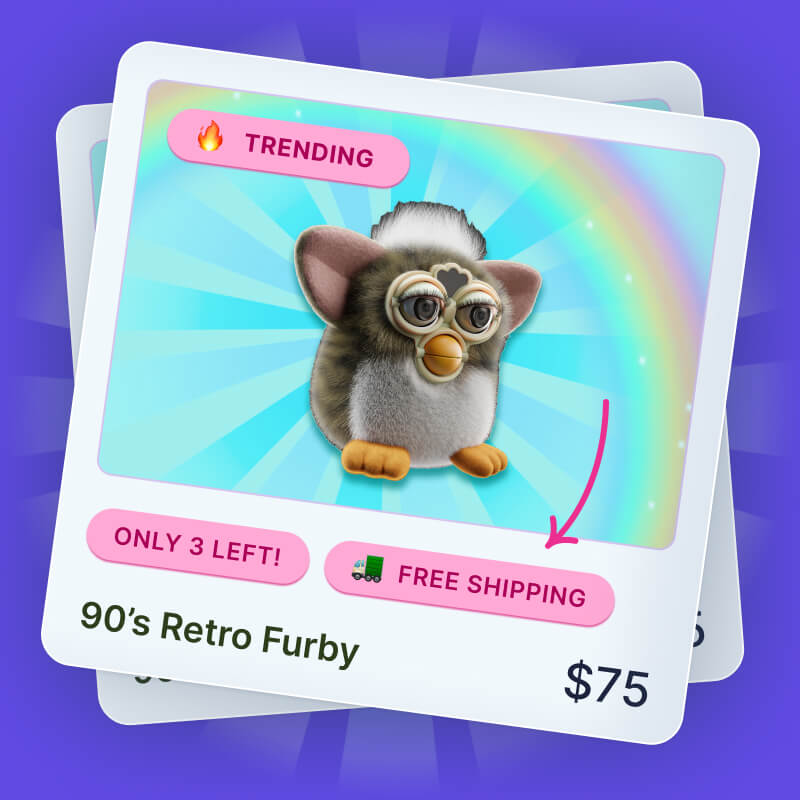Shopify Product Tags for SEO: Do They Help & How to Use Them

Did you know traffic from organic search converts at a higher rate than any other source?

So it’s clearly in your best interests to make your store as search-friendly as possible.
Which brings us to Shopify product tags. Lots of merchants believe that product tags can improve their store’s SEO. But, as we’ll explore in this article, the reality is actually a little more complex. Read on to learn:
👉 How Shopify product tags work
👉 The difference between product tags and collections
👉 Whether product tags actually improve SEO
Let’s get into it…
What are Shopify Product Tags?
Shopify product tags are a way to categorize products based on shared traits and characteristics, like size, price, or materials. You can add them through your Shopify admin (more on this later…) and they look like this:

Of course, tags aren’t the only way to categorize your products – you can do it by creating Shopify collections, too. So what’s the difference?
Shopify Tags vs Collections: What's the Difference?
Collections and product tags are both used to group similar products. But product tags can also be used to:
👉 Allow shoppers to filter items on collection pages, helping them find relevant products
👉 Automate various store functionality, such as adding products to automated collections or promotions
At this point, you might be thinking: “If product tags do everything that collections do and more, why do I need collections at all?”
Fact is, tags and collections actually complement one another. To demonstrate, let’s take a look at a real Shopify store, Maguire Shoes. They use collections to divide their products into top-level and sub-categories, such as:
👉 Top-level collections: Footwear; Accessories
👉 Sub-collections: Footwear > Women’s mules and clogs; Accessories > Handbags

But those sub-categories are still pretty broad.
Like, if I’m shopping for mules and clogs, I don’t necessarily want to see Maguire’s whole collection – I want to see those that are most relevant to me. That’s why Maguire uses product tags to let shoppers filter by:
👉 Size
👉 Color
👉 Heel height
👉 Material
👉 Style

So, for most stores, it makes sense to use a combination of tags and collections to improve the customer experience.
Do Shopify Product Tags Help SEO?
Long story short: no, Shopify product tags don’t help SEO.
(At least, not directly.)
In fact, they can actually damage your store’s organic visibility. Why? Because each time you add a new tag to a product, Shopify automatically creates one new page for every collection the product appears in.
So if you tag a product that’s listed in 10 collections, guess what? – you’ve instantly spawned 10 new pages 😱
You can see if this issue affects your store by Googling:
👉 site:[yourstore.com] intitle:Tagged -inurl:tagged

Now, this wouldn’t be such a problem if those pages contained some sort of valuable content.
But they don’t, because Shopify doesn’t let you customize them – so they’re nothing more than a list of products:

And because it’s easy to create dozens of those pages by tagging a handful of products, they can make a major dent in your crawl budget, preventing Google from seeing (and indexing) higher-value pages.
Which is definitely bad news for your SEO.
Pro tip: Learn more in Shopify SEO Problems: 9 Common Issues & How to Fix Them.
So Why Use Product Tags At All?
If Shopify product tags generate a ton of low-value pages, and those pages are bad news for your store’s SEO, why even bother using them? Because they have a bunch of other benefits…
Boost Search Visibility With Internal Linking
Internal links are links pointing from one page on your site to another. For instance, this internal link on the Gymshark site…

…points toward the brand’s dedicated subcollection for gray men’s joggers.
Internal links play a crucial role in SEO by helping search engines understand your site structure. Generally speaking, pages that have lots of internal links pointing to them are more visible in search (it’s not all about quantity, though, so don’t just start mindlessly spamming links across your store).
Product tags help here, because each tag page creates a bunch of new internal links to product pages sharing that tag.
In other words – product tags can potentially increase your store’s organic visibility 🔎
Deliver a Better Customer Experience
As we’ve already discussed, product tags improve the customer experience by making it easier for shoppers to find exactly the right product through filtering.
If browsing your store is an enjoyable, stress-free experience, customers are more likely to stick around, browse multiple products and collections, and ultimately buy something.
Not only is this good for your bottom line, but it also boosts your store’s engagement metrics – which, in turn, can lead to higher organic rankings.
Create Automated Collections & Promotions
Product tagging also unlocks a whole world of automation.
On one hand, you can use product tags to launch automated Shopify collections. For instance, you might create a “summer” product tag, add it to a bunch of summer-themed gear – T-shirts, sunglasses, swimwear – then set up an automated “summer” collection containing all the products you’ve just tagged.
Pro tip: Learn more in Shopify Collections & How to Use Them.
Product tags can also play a key role in your promotional strategy.
For instance, you can use tags to put specific products on sale, or highlight marketable features such as limited-edition products or staff picks.
All of which can boost your conversion rate.

Grow Your Shopify Sales by over 175% with Flair
-
Increase sales using product badges and sales banners
-
Maximize conversions with scarcity, urgency and countdown timers
-
Automate promotions with targeted rules and scheduling
How to Implement Shopify Product Tags
Adding product tags on Shopify is super easy. Just follow these steps:
- Log in to your Shopify admin.
- In the left-hand menu, click Products and select the product you want to tag.

- Scroll down to the Tags section of the product page and click the search box to bring up a list of existing tags, then check the empty box to add them to your product.

- Alternatively (or additionally), enter new tags into the search box and click Add.

- When you’re through adding tags, click Save.
This approach works perfectly if you only want to add tags to one or two products. But if you’re trying to tag lots of products at once, you can save a ton of time using Shopify’s bulk editor.
Here’s how to use it:
- Log in to your Shopify admin.
- In the left-hand menu, click Products, then check the Product box at the top of the page to select all your products.

- Click Bulk edit.

- Click Columns and check the box next to Tags.

- In the Tags column, click the cell for the product you want to tag, then select your desired tag from the drop-down list (or type a new tag, as we described above).

- Repeat this process for all the other products you want to tag, then click Save.
6 Best Practices for Using Shopify Product Tags
Shopify product tags are easy to implement and offer a range of benefits. So you should probably go on a tag-creating binge, right?
Wrong.
Too much tagging leads to what we call “tag sprawl”, where your store is littered with random, poorly organized product tags. Far from improving the customer experience, this makes it harder for shoppers to find what they’re searching for – and it’s also a nightmare to manage.
Pro tip: From a practical perspective, most Shopify plans have a hard limit of 250 tags per product – so you definitely can’t add more than that.
Get it right by following these product tagging best practices…
1. Consider Tag Structure
Rather than taking a scattergun approach to product tagging, take a hierarchical approach. Here’s a simple example of how that might look for a men’s clothing store:
👉 T-shirts > Polo shirts > Long-sleeve polo shirts
That way, your tags will have a logical structure, making it easier for shoppers to find what they’re searching for.
2. Write Short Tag Names
Keep your tags as concise as possible – ideally no more than 20 characters or so.
Realistically, if you can’t accurately describe a bunch of products in <20 characters, they’re not specific enough to be covered by a single tag. In which case consider breaking them up into two (or more) tags. For instance:
❌ Red short-sleeve T-shirts
✅ Short-sleeve T-shirts; Red T-shirts
3. Avoid Special Characters
When naming product tags, it’s best to avoid accented characters and symbols. Stick to:
👉 Letters
👉 Numbers
👉 Hyphens
Although Shopify product tags support some special characters, in practice they either get ignored or treated as “identical”.
For instance, if you created an automated collection with the condition Product tag is equal to small-black, it would also include products with the following tags:
👉 small+black
👉 small&black
👉 small_black
4. Make Tags Clear & Memorable
Shopify product tags should make life easier for you and your employees by simplifying inventory management – such as helping you identify out-of-stock products and manage product variants.
However, this only works if your tags are descriptive and easy to remember.
Anyone can understand a tag like T-shirts-red or long-sleeve-shirts, but 2025-drop isn’t so clear – is it referring to a new product drop, a price drop, or something else?
5. Ensure Customer-Facing Tags Are Obvious to Customers
Depending on your Shopify theme, your product tags may be visible to anyone browsing your store through elements like drop-down filter menus. You want those customer-facing tags to be easy to understand (and useful) for shoppers.
For instance, BFCM25 might not be obvious to the average customer, whereas Black-Friday-2025 is a lot clearer.
6. Keep Tags Specific (and Collections Broad)
On Shopify, your collections – and sub-collections – should be broad, search-friendly categories of related products.
Product tags, on the other hand, should be super specific ways to group or distinguish products within those categories.
For example, imagine you run a Shopify food store selling herbs and spices. You might have a broad collection for Herb and spice blends, along with specific, single-word tags to describe individual ingredients, such as:
👉 Cumin
👉 Cayenne
👉 Basil
You’d then apply multiple tags to each herb-and-spice blend, based on the ingredients it contains.
That way, if you want to run a Halloween promotion for blends with the Pumpkin-spice tag, you can easily group them together in an automated collection.
FAQs
Should I use tags on Shopify?
Yes, you should definitely use tags on Shopify to organize your products. That way, it’s easier for shoppers to find what they’re looking for, which can boost your conversion rate. It also improves your store’s engagement metrics, which leads to higher search rankings.
What is the maximum number of tags on Shopify?
The maximum number of tags on Shopify depends on your Shopify plan. If you’re on a “regular” plan – Basic, Grow, or Advanced – you can add up to 250 tags per product. But if you’re a Shopify Plus user, you can add unlimited tags – although only 250 will display when bulk editing tags.




